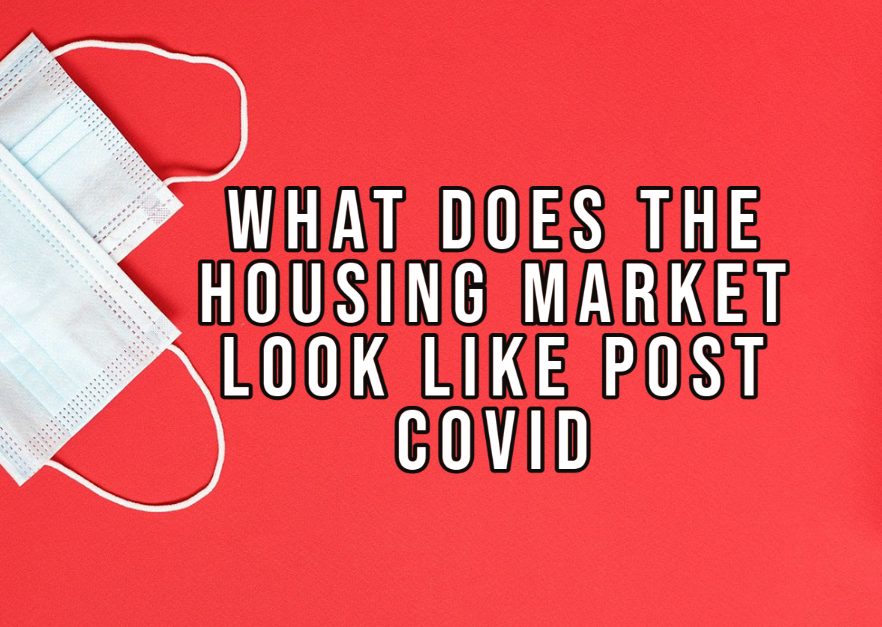- Navigator
- National
- Real Estate Development and Housing

Lack of housing, especially affordable housing, continues to be a crisis as we emerge from the COVID-19 pandemic. As part of our real estate service line, Camoin continuously tracks housing trends including COVID impacts on real estate and housing construction trends. As we approach 2022, we are looking at expectations for the housing market following COVID.
Housing Market
As we enter Fall 2021, overall housing demand remains high with limited inventory and higher than usual prices compared to pre-pandemic levels. As of July 2021, pending home sales have declined along with slowing median listing prices and lessening of the tight housing market. Experts are claiming that housing prices in 2022 will start to alleviate indicating a positive environment for homebuyers.
Rising mortgage rates will contract mortgage and refinancing activity and help to balance out high sale costs. During the summer of 2020, mortgage rates fell below 3% leading to a surge in mortgage and refinancing activity and thus increased housing demand. As mortgage rates are rising and projected to reach 3.4% by the end of the year we can anticipate a reduction in housing prices.[1]
During COVID an increase in housing starts and an uptick in homeownership had builders struggling to keep up with housing demand. Although lumber prices have gone down from highs in summer 2021 construction costs remain altogether high with a lack of labor constraining development activity. Real estate investors are anticipated to continue purchasing starter houses to rent or flip resulting in increased competition for first-time home buyers and those in the market for lower-priced homes.
Home purchases during the pandemic indicated that two opposing market preferences were alive in well. There was an increase in larger single-family housing with low-interest rates leading people to get the most “bang for their buck” combined with remote working trends led to larger footprints. At the same time, the housing stock entering the market currently is smaller than typical prior to the pandemic indicating there’s a strong demand for smaller footprints as well.
Overall, market conditions suggest for-sale housing p can anticipate a reduction in price and competition and a slow shift away from a sellers’ market.
Rental Market
Multifamily occupancy stayed steady during the pandemic due to the eviction moratorium. As of September 2021, that eviction moratorium was extended to mid-January in some states. According to the United States Census, nearly 6.2 million households in the United States are behind rent totaling a rent debt of $16.8 billion.[2] Federal rent relief funding is being paid out to help to support small landlords whose tenants have forgone rent payments due to hardships related to the pandemic. Concerns over evictions and how forbearance will be handled are pressing issues impacting the rental housing market.
Rental rates have increased dramatically during the pandemic with the national median rent increasing 11.4% in the first half of 2021. By comparison, before the pandemic rent increased 3.3% in the first half of 2017, 2018, and 2019.[3] Rent growth is currently outpacing wage growth placing additional pressure on housing affordability. In general, the rental housing market is skewing towards a wealthier demographic placing additional pressure on lower-wage earners to find suitable housing. In terms of household incomes, wealthier rental incomes have gained traction in the rental market while households with household incomes below $45,000 have been declining.[4]
A rise in regional and domestic travel associated with the pandemic also increased housing pressure. Rental property owners, especially those in travel destinations, transitioned units to short-term rentals through platforms such as Airbnb and Vrbo to capitalize on high travel demand and nightly rates. This further depletes the rental housing inventory available to the local workforce and causes a rise in rental rates.
Student rental housing has been hit hard by the COVID pandemic. With schools transitioning to remote learning the need for luxury student housing is declining. Of rental housing options, landlords were more likely to offload student housing properties and the least likely to sell single-family rentals.
Housing market experts anticipate a large demand for rentals to continue and for rental rates to continue to rise. This is driven by the overall housing market where there is strong demand, low inventory, higher property prices, and increased wealth for those who rent. Despite current challenges, smaller rental landlords are anticipated to continue investing in real estate over the next five years with a focus on both long-term and short-term rentals.
Overall, there continues to be a lot of uncertainty with the rental housing market with risks in housing volatility related to high prices, rising mortgage rates, and concerns over how forbearance will be handled. We at Camoin will continue to monitor the latest market trends and work to respond to housing concerns in communities.
Other trends
The housing market is also being shaped by commercial space conversion. Office spaces in San Francisco, San Jose, Seattle, New York, Fort Work, Dallas, and Houston are being converted into housing.[5] So far with conversions being costly, these conversions are primarily focused in dense cities where land costs are a premium. Many developers are choosing to wait out the pandemic market cycles to determine how best to expand their portfolios.
[1] Realtor.com 2021 Forecast
[2] https://nationalequityatlas.org/rent-debt
[3] https://www.apartmentlist.com/research/national-rent-data?__source=newsletter%7Cmakeit
[4] https://managecasa.com/articles/us-rental-property-market/
[5]https://www.nbcnews.com/business/real-estate/why-empty-offices-aren-t-being-turned-housing-despite-lengthy-n1274810





